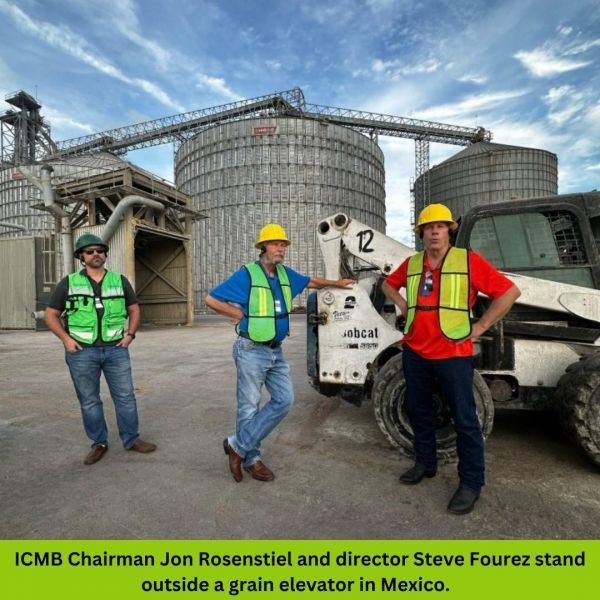ICMB Efforts in Mexico Magnified by Rail Issues

Eighty-degree December weather is not ideal for grain storage on Steve Fourez’s farm in Fairmont, Illinois. Although hot weather and humidity poses challenges for grain sitting in bins, the IL Corn Marketing Board Director (ICMB) said it is a reality for feedlot and feed mill owners in Mexico.
In early December, Fourez attended a U.S. Grains Council (USGC) mission, alongside ICMB Chairman Jon Rosenstiel. The group focused on the quality of grain storage and strengthening relationships with importers in Mexico. The director’s experience magnified the impact a long-term railway shutdown, similar to last week’s closure on the southern border, could have on the country’s limited grain supply.
“They really are dependent on a constant stream of good quality U.S. corn in order to continue what they're doing,” said Fourez. “They just don't have the capability or the climate and conditions to be able to sit on large quantities of corn.”
Rail movements from Illinois to Mexico represented approximately 18% of all corn exports to Mexico in 2022 and about 25% in 2023. In 2023, about 64 percent of all corn shipments to Mexico were by rail. In addition to the impact on United States exports and corn basis, the railway shutdown quickly became an animal welfare concern. Most Mexican livestock operations have only weeks’ worth of animal feed on hand due to climate and limited onsite storage.
In 2022, ICMB, the U.S Grains Council and Purdue University began a project to improve grain storage quality in tropical climates. The project’s first focus was on America’s southern neighbor, and during the recent mission the council demonstrated the results of its work with two feedlots, Santa Rita and Las Maravillas, as well as one feed mill, PROVI in Veracruz and Mérida.
The partnership provides free services to feedlots and mills by Mexican consultants who assess grains bins for damage and free technical service. In exchange, consultants collect data aimed to better understand grain storage in equatorial climates.
USGC was founded in 1960 to develop export markets for America corn, sorghum, and barley. ICGA Director of Exports and Logistics Collin Watters said the project in Mexico goes back to the roots of USGC and ICMB’s partnership with the council. “The idea is that we are helping customers become better businesspeople who are smarter about their investments while we demonstrate the value of U.S. corn,” Watters said. “We want our customers to be profitable. If they are profitable, they will be our customers longer.”
The organizations hope to take the information gained through the projects to support markets beyond the three-phase program. Illinois corn farmers export grain to other countries plagued by similar tropical storage problems.
“If that template can be used, I think that is where the real value is,” Watters said. “It’s a long-term global perspective.”
IL Corn Marketing Board Chairman Jon Rosenstiel said he views the program as a steppingstone to improve grain quality across the world. Rosenstiel said the program opened his eyes to expansive market opportunities.
“The efforts of the IL Corn Marketing Board and the U.S. Grains Council in Varacruz and Mérida showcases the important work our checkoff program does to ensure future markets are available for Illinois corn farmers,” Rosenstiel said. “We help our customers improve which in turn helps our U.S. growers improve.”






